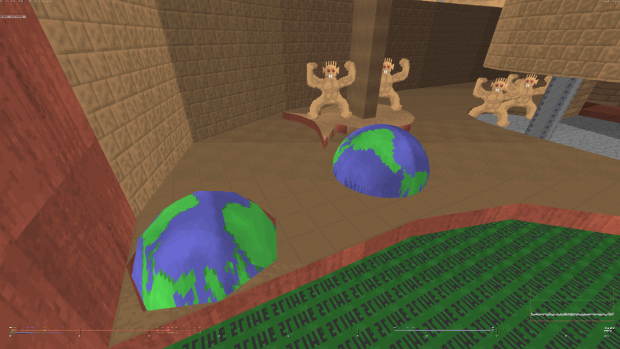Brahma is a 3D game engine with a rather retrofuturistic design, intended for small studios and solo developers. It's being written from scratch in C++ using standard Windows API and no third-party libraries. This technology introduces an entirely new class of low-latency real-time engines that make special timing requirements, treating frames as video fields with a target time budget of 2-4 ms each, down from 16-33 ms frame budgets normally seen in game engines. It evolves in a different way than other modern engines, rejecting conventional BSP, Z-buffer, floating-point coordinates, and most of the lame screen-space effects in favor of innovative and efficient techniques. The engine is non-Euclidean capable to some degree; also it supports true displacement mapping for sectors as a means to virtualize geometry that affects collisions. The engine is also carefully designed to be easy and convenient to develop for, yet versatile and adaptive to any needs.
A slightly altered map from Ken Silverman's Build tech demo, where I've decided to bring the heightmapped globe back, and even tried to do both hemispheres at once.
The early Build demos featured some limited use of heightmapping; however, in later versions the feature was ditched in favor of slopes. Accordingly, the glorious heightmapped globe in this map was replaced with an ugly polygonal mockery of a sphere which can be seen on the left.
Globe visualization is currently limited to a single hemisphere. When Brahma engine can render stacked heightmaps from any angles successfully, a full globe floating in the air could be easily modeled using this technique.






